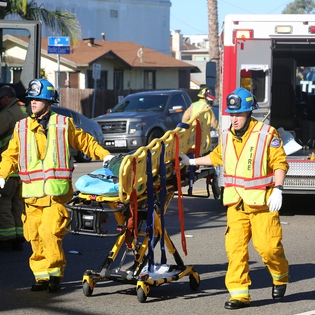Disaster Recovery Services for Organizational Resiliency
November 30, 2017

Hospitals are in the unique position of providing a type of disaster recovery services to their patients. Ironically, they may be in the thick of handling the effects of a disaster on the very systems that provide these services.
Hospitals must prepare precisely for these events in order to handle the influx of injured, disoriented people during a major hurricane, earthquake, or terrorist attack. If medical services go dark, lives are lost, so planning ahead to combat the effects of anything that can disrupt operations is a life-saving imperative.
This post explores the unique needs of healthcare providers and the importance of disaster recovery. It will share stories of the damage caused by the latest round of natural disasters, along with hacker exploits, and how disaster recovery can help hospitals keep going.
How will your hospital weather the next storm? Get a free assessment today.
Disaster Recovery Services – Intrinsically Tied to IT
It’s obvious that the modern hospital runs on digital technology. From EMRs to billing systems to operating room equipment, care delivery is computerized. Developing disaster recovery services that will create redundancy in these systems, along with business continuity for the facilities and human capital, may seem tedious, but it is a necessity in today’s uncertain world.
Looking back at 2017 we’ve seen:
Whether it’s wildfires or excessive rain, ransomware or a power outage, hospitals and other healthcare professionals can no longer avoid creating a disaster recovery services matrix to effectively guide the organization during a crisis.
Working Smarter Toward Disaster Recovery Services
These plans are not all created equal, which typically necessitates the use of an IT team devoted to disaster recovery services planning. Business continuity plans for hospitals should be living, breathing documents that change and flex regularly with the workflows and applications the hospital uses. Creating a stagnant plan that quickly becomes outdated is just as detrimental as creating a plan that isn’t tied to business and operational functions.
For example, a CIO Review article quotes a Wells Fargo business executive, as saying the prioritization of business functions is what should guide any disaster recovery plan. According to the article, “Aligning technology and business needs helps IT better allocate resources to support the business while maintaining their budget.”
Defining alternative ways to handle the disruption of services requires smart thinking about the possibility of risk and how to mitigate it. Looking at disaster recovery services from an operational delivery standpoint will ensure a more effective plan from both a cost and operational delivery perspective.
For example, say the disaster recovery plan encompasses a multi-location medical practice network. If one or more facilities are impacted by a disaster, would it make sense to use a cloud-based virtual machine framework, with employees dialing in remotely from another facility? If so, have all of the affected employees been briefed on how to dial-in to access data? Will they use personal computers that are authorized by the company or other machines to log in?
Accessing all the angles and all the potential types of disasters is a crucial part of organizational resiliency. Adding crisis communications and management to the plan is also important to ensuring patients will understand what is happening and what steps you’ve taken to keep them safe. Developing a crisis management team to direct all the pieces of the puzzle will help ensure your IT infrastructure weathers the next crisis – no matter what it may be.
Talk with TOSS C3 to find out more about disaster recovery services. Request a quote now.

Subscribe now and stay up to date with News, Tips, Events, Cybersecurity, Cloud and Data Compliance.